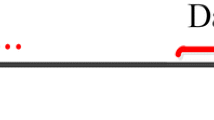Abstract
This study employs a combination of weighted least-squares extrapolation and an autoregressive model to produce medium-term predictions of polar motion (PM) parameters. The precisions of PM parameters extracted from earth orientation parameter (EOP) products are applied to determine the weight matrix. This study employs the EOP products released by the analysis center of the ‘International Global Navigation Satellite System Service and International Earth Rotation and Reference Systems Service’ needs to be modified to ‘International Global Navigation Satellite System Service (IGS) and International Earth Rotation and Reference Systems Service (IERS)’ as primary data. The polar motion parameters and their precisions are extracted from the EOP products to predict the changes in polar motion over spans of 1–360 days. Compared with the combination of least-squares and autoregressive model, this method shows considerable improvement in the prediction of PM parameters.




Similar content being viewed by others
References
Dow JM, Gurtner W, Schlüter W (2005) The IGGOS viewed from the space geodetic services. J Geodyn 40(4):375–386
Freedman AP, Steppe JA, Dickey JO, Eubanks TM, Sung LY (1994) The short-term prediction of universal time and length of day using atmospheric angular momentum. J Geophys Res Solid Earth 99(B4):6981–6996
Guo JY, Li YB, Dai CL, Shum CK (2013) A technique to improve the accuracy of earth orientation prediction algorithms based on least squares extrapolation. J Geodyn 70(10):36–48
Kalarus M, Kosek W, Schuh H (2007) Current results of the earth orientation parameters prediction comparison campaign. Proc Journées 84(10):587–596
Kalarus M, Schuh H, Kosek W, Akyilmaz O, Bizouard C, Gambis D et al (2010) Achievements of the earth orientation parameters prediction comparison campaign. J Geodesy 84(10):587–596
Kosek W, McCarthy DD, Johnson TJ, Kalarus M (2004) Comparison of polar motion prediction results supplied by the IERS Sub-bureau for Rapid Service and Predictions and results of other prediction methods. In: Finkelstein A, Capitaine N (eds) Proc. Journées 2003 Systèmes de Référence Spatio-Temporels, pp 164–169
Kosek W, Kalarus M, Niedzielski T (2008) Forecasting of the earth orientation parameters comparison of different algorithms. Nagoya J Med Sci 69(3–4):133–137
Lei Y (2016) Study on method for high accuracy prediction of earth rotation parameters. Chinese Academy of Sciences, Beijing
Schuh H, Ulrich M, Egger D, Müller J, Schwegmann W (2002a) Prediction of earth orientation parameters by artificial neural networks. J Geodesy 76(5):247–258
Sun Z (2013) Research on the theories and algorithms of earth rotation parameters prediction. Chang’an University, Xi’an
Sun Z, Xu T (2012) Prediction of earth rotation parameters based on improved weighted least squares and autoregressive model. Geodesy Geodyn 3(3):57–64
Sun Z, Xu T, He B, Ren G (2015) Prediction and analysis of Chinese earth rotation parameters based on robust least-squares and autoregressive model. In: China satellite navigation conference (CSNC) 2015 proceedings: vol II. Springer, Berlin, Heidelberg, pp 477–486
Völgyesi L (2006) Physical backgrounds of Earth’s rotation, revision of the terminology. Acta Geod Geophys Hung 41(1):31–44
Xu XQ (2012) Researches on high accuracy prediction methods of earth orientation parameters. University of Chinese Academy of Sciences, Beijing
Xu XQ, Zhou YH (2015) EOP prediction using least square fitting and autoregressive filter over optimized data intervals. Adv Space Res 56(10):2248–2253
Xu XQ, Zotov L, Zhou YH (2012a) Combined prediction of earth orientation parameters. In: China satellite navigation conference (CSNC) 2012 proceedings lecture notes in electrical engineering, 2012, vol 160, Part 2, pp 361–369. https://doi.org/10.1007/978-3-642-29175-3_32
Xu XQ, Zhou YH, Liao XH (2012b) Short-term earth orientation parameters predictions by combination of the least-squares, ar model and Kalman filter. J Geodyn 62(1016):83–86
Yan F, Yao Y (2012) Short-term prediction methods and realization of earth rotation parameters. J Geod Geodyn 32(4):71–75
Yao YB, Yue SQ, Chen P (2013) A new LS + AR model with additional error correction for polar motion forecast. Sci China Earth Sci 56(5):818–828
Zhang H (2012) Researches on the prediction theories and algorithms of polar motion of earth orientation parameters. Central South University, Changsha
Acknowledgements
The work is supported by the Ordinary University Graduate Student Research Innovation Project of Jiangsu Province (KYLX16_0541), National Natural Science Foundation of China (41774005), National Natural Science Foundation of China (41404033), Open research fund projects of the state key laboratory (SKLGIE2014-Z-1-1) and Project on Basic Research of The National Department of Science and Technology (2015FY310200). We thank the IERS and IIGS for providing the EOPs products.
Author information
Authors and Affiliations
Corresponding author
Rights and permissions
About this article
Cite this article
Wu, F., Deng, K., Chang, G. et al. The application of a combination of weighted least-squares and autoregressive methods in predictions of polar motion parameters. Acta Geod Geophys 53, 247–257 (2018). https://doi.org/10.1007/s40328-018-0214-3
Received:
Accepted:
Published:
Issue Date:
DOI: https://doi.org/10.1007/s40328-018-0214-3




